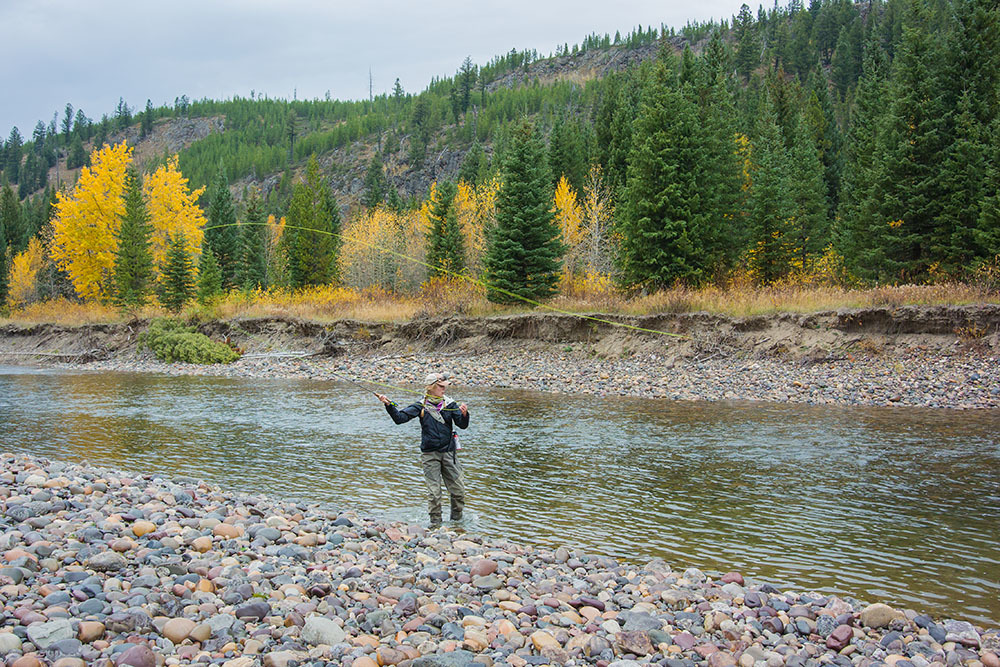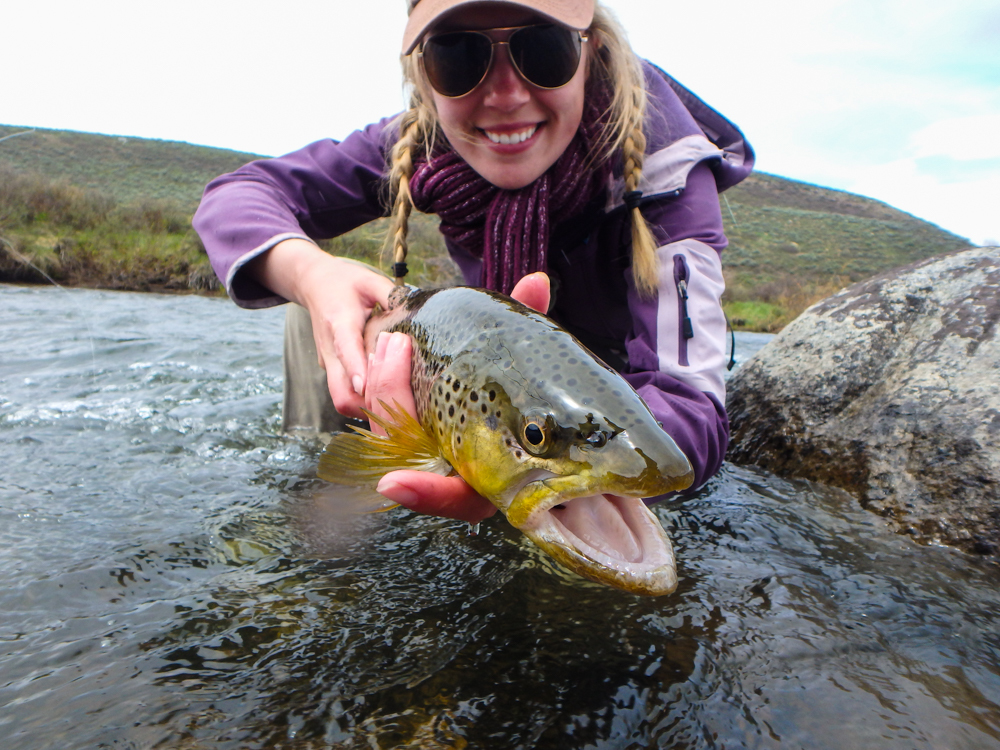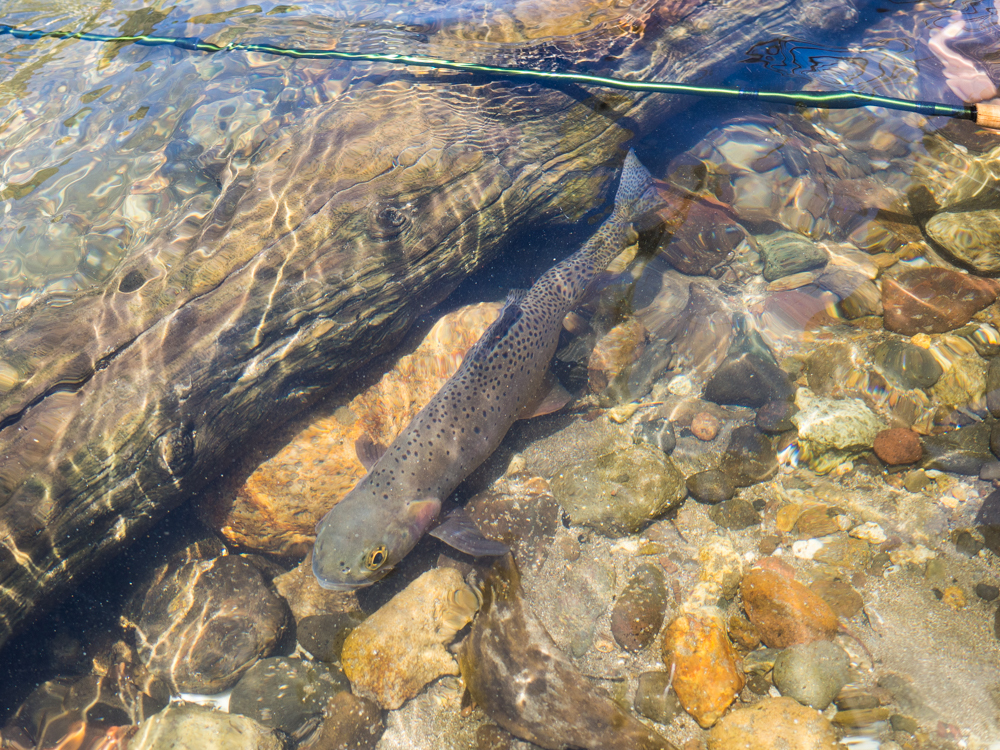NFF: How did you get into fly fishing?
KC: I’ve been fishing since I can remember—but it started with spin fishing. In all honesty, I always enjoyed a day on the lake, but ‘cast, reel, repeat’ could get a bit repetitive. When I moved out West, I caught glimpses here and there of people fly fishing—lines looping, rivers flowing, mist rising—all poetry in motion.

Photo by Andrew Bennett
After much pestering, a friend took me along to a spot where we could sight fish to Snake River Fine Spotted Cutthroat. After a dozen or so identical drifts, a 14-16 inch trout decided to move, and I watched it slide out of its holding position, turn its head, and slam the fly. Up until that point, I was nervous, but that all faded once the hook was set.
NFF: What was your first experience like?
That first experience was on the Bridger-Teton National Forest, Gros Ventre River drainage. That place is truly special: one minute, it’s dense late-successional fir and spruce, the next, blaze red sedimentary hills above sagebrush-covered valleys. The Gros Ventre River and its tributaries offer a lovely array of fishing opportunities. It was an amazing experience that first day as a beginner, and continues to offer new challenges and wild water to explore as a more seasoned angler.

NFF: What advice would you offer to someone dreaming about fly fishing?
KC:
- Read books.
- Learn etiquette.
- Watch other anglers.
- Watch water.
- Watch fish.
- Ask people questions. Ask the fish, too, while you’re at it.
Another bit of advice comes from regret and a lesson learned: I kept that first fish. Pan-fried and ate it right there on the bank of the Gros Ventre. I am interested in sustainable and foraged foods, and was more focused on that than trout conservation in that particular moment.

But fine-spotted cutthroat are a special species: a native trout in its native waters is an increasingly rare opportunity. Even though you can keep them in most of the waters they are found in, really consider it before you do. As most of the old timers and outfitters I’ve met will say, those fish are your friends, and there really aren’t that many to go around. You might literally get to the point where you catch the same fish, which makes you appreciate how important each one is.
NFF: What do you love about fishing?
KC: Fly fishing is an amazing way to experience the outdoors, especially our National Forests. Norman Mclean is constantly quoted about fly fishing, but I think my favorite is,
“Poets talk about ‘spots of time,’ but it is really fishermen who experience eternity compressed into a moment. No one can tell what a spot of time is until suddenly the whole world is a fish and the fish is gone.”
I’ll hike miles upon miles to find a fish, to find that moment and that world. When you manage to land in that spot in time, it makes that place—that river, that Forest, that wilderness—all the more meaningful and awe-inspiring.
Follow the adventures of Katy, a self-described trout bum, and her husband Mike at http://www.streamandtrail.com/ and https://www.instagram.com/katy....
Photos: Mike Canetta, Andrew Bennett and Katy Canetta

